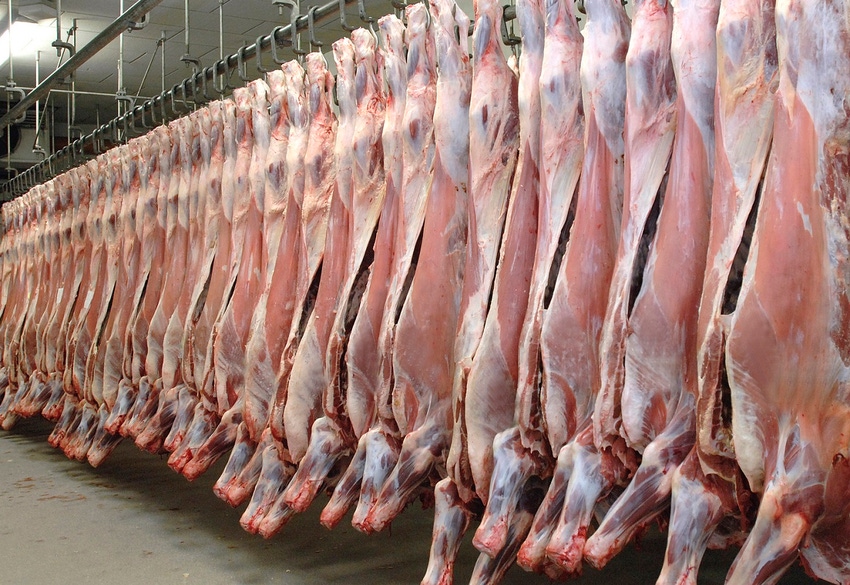
Declining steer slaughter as a percentage of total slaughter is further evidence the herd expansion is slowing or nearing an end.
Steer slaughter has averaged 51.6% of total cattle slaughter so far this year, down from 52.9% of total cattle slaughter in 2017. As heifer and cow slaughter return to normal levels, steer slaughter will move closer to the long term average -- 50.6% of total slaughter, says Derrell Peel, Oklahoma State University extension livestock marketing specialist.
Interestingly, steer slaughter continues to run below year-ago levels so far this year, Peel says. This despite the fact that the quarterly feedlot inventories have shown more steers on feed in 2018 compared with 2017. Peel adds that steer slaughter so far this year is about 1% below last year but in the last four weeks has averaged very close to year-ago levels.
Steer carcass weights have averaged about four pounds above year-earlier levels so far this year. Weekly steer carcass weights may have peaked seasonally a bit early the first week of October at 903 pounds. Peel notes that steer carcass weights averaged 895 pounds in the latest weekly data but could jump to a higher seasonal peak yet in November.
He notes that heifer slaughter so far this year is averaging about 7% above year-ago levels with smaller year-over-year increases in recent weeks pulling the year-to-date total down. In the last four weeks, heifer slaughter has averaged just 1.5% over year-earlier levels. Heifer slaughter thus far in 2018 has averaged 27.8% of total cattle slaughter, up from 27.2% in 2017. Peel says as heifer retention continues to slow, heifer slaughter will approach the long-term average just under 30% of total cattle slaughter.
Heifer carcass weights also have been up. They have averaged about eight pounds heavier than in 2017 for the year to date. As with the steers, heifer carcass weights may have peaked seasonally at 835 pounds the first week of October. In the latest weekly data, heifer carcass weights were 828 pounds but could increase to a more typical seasonal peak in November. Heifer carcass weights continue to increase relative to steers, posting 92.7% the average carcass weight for steers as the latest 12-month moving average. Peel says this is a record.
Total cow slaughter is up 7.3% for the year to date, with beef cow slaughter up 10.5% year over year as beef cow culling returns to long-term average levels, Peel says.
Poor dairy economics have pushed dairy cow slaughter up 4.3%, year over year. Cow slaughter is averaging 18.9% of total cattle slaughter so far in 2018 compared to a long-term average of 17.7% of total slaughter. Cow carcass weights are averaging nearly five pounds heavier, year over year. Dairy cows, of course, are adding to cow carcass weights.
Total cattle slaughter is up 2.7%, year over year thus far in 2018. Increased cattle slaughter together with an average 2.3-pound increase in cattle carcass weights, have built a year-to-date increase in beef production of 2.7% over this time last year. Total 2018 beef production is projected to be 27.0 billion pounds, a new record beef production total for the U.S. Further, Peel and other market analysts say U.S. beef production is forecast to grow to another record level of 27.5 billion pounds in 2019.
With more beef supply coming to market the value of lean grinding beef has come under some pressure, adds the Daily Livestock Report from Steiner Consulting Group and the CME Group. Domestic lean beef prices were supported through the spring and summer by robust ground beef demand from retail and foodservice operators. However, retail ground beef demand loses some "luster" during the holiday season and foodservice business also tends to be inconsistent because of weather.
About the Author(s)
You May Also Like




